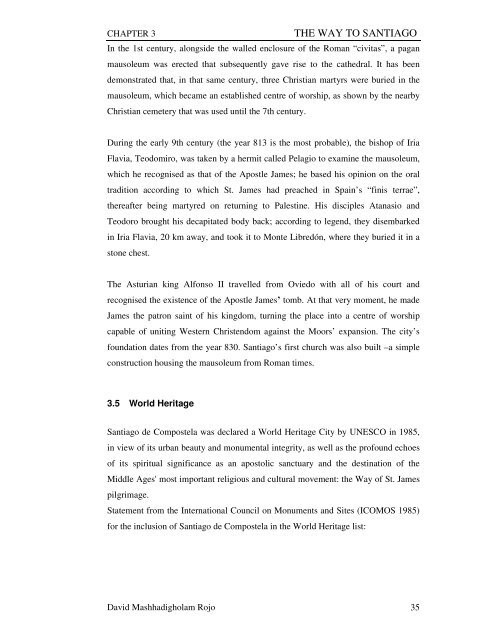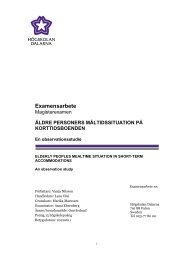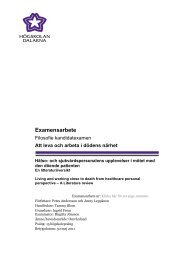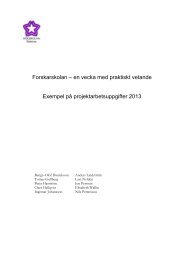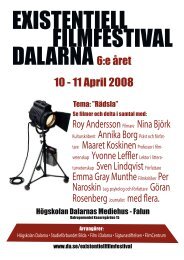Religious Tourism: The Way to Santiago
Religious Tourism: The Way to Santiago
Religious Tourism: The Way to Santiago
You also want an ePaper? Increase the reach of your titles
YUMPU automatically turns print PDFs into web optimized ePapers that Google loves.
CHAPTER 3 THE WAY TO SANTIAGO<br />
In the 1st century, alongside the walled enclosure of the Roman “civitas”, a pagan<br />
mausoleum was erected that subsequently gave rise <strong>to</strong> the cathedral. It has been<br />
demonstrated that, in that same century, three Christian martyrs were buried in the<br />
mausoleum, which became an established centre of worship, as shown by the nearby<br />
Christian cemetery that was used until the 7th century.<br />
During the early 9th century (the year 813 is the most probable), the bishop of Iria<br />
Flavia, Teodomiro, was taken by a hermit called Pelagio <strong>to</strong> examine the mausoleum,<br />
which he recognised as that of the Apostle James; he based his opinion on the oral<br />
tradition according <strong>to</strong> which St. James had preached in Spain’s “finis terrae”,<br />
thereafter being martyred on returning <strong>to</strong> Palestine. His disciples Atanasio and<br />
Teodoro brought his decapitated body back; according <strong>to</strong> legend, they disembarked<br />
in Iria Flavia, 20 km away, and <strong>to</strong>ok it <strong>to</strong> Monte Libredón, where they buried it in a<br />
s<strong>to</strong>ne chest.<br />
<strong>The</strong> Asturian king Alfonso II travelled from Oviedo with all of his court and<br />
recognised the existence of the Apostle James’ <strong>to</strong>mb. At that very moment, he made<br />
James the patron saint of his kingdom, turning the place in<strong>to</strong> a centre of worship<br />
capable of uniting Western Christendom against the Moors’ expansion. <strong>The</strong> city’s<br />
foundation dates from the year 830. <strong>Santiago</strong>’s first church was also built –a simple<br />
construction housing the mausoleum from Roman times.<br />
3.5 World Heritage<br />
<strong>Santiago</strong> de Compostela was declared a World Heritage City by UNESCO in 1985,<br />
in view of its urban beauty and monumental integrity, as well as the profound echoes<br />
of its spiritual significance as an apos<strong>to</strong>lic sanctuary and the destination of the<br />
Middle Ages' most important religious and cultural movement: the <strong>Way</strong> of St. James<br />
pilgrimage.<br />
Statement from the International Council on Monuments and Sites (ICOMOS 1985)<br />
for the inclusion of <strong>Santiago</strong> de Compostela in the World Heritage list:<br />
David Mashhadigholam Rojo 35


